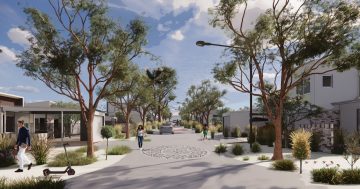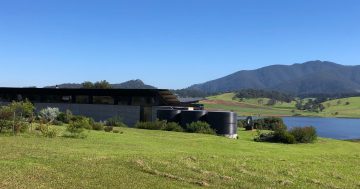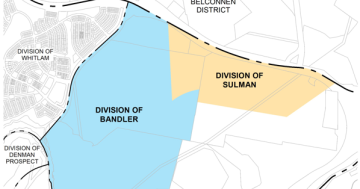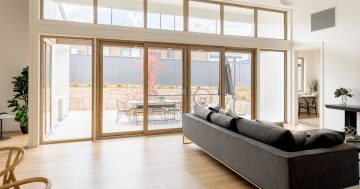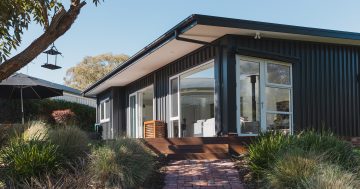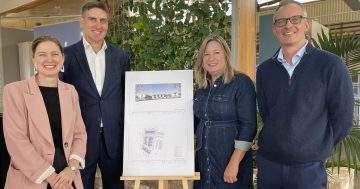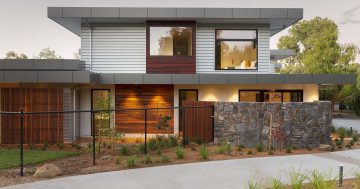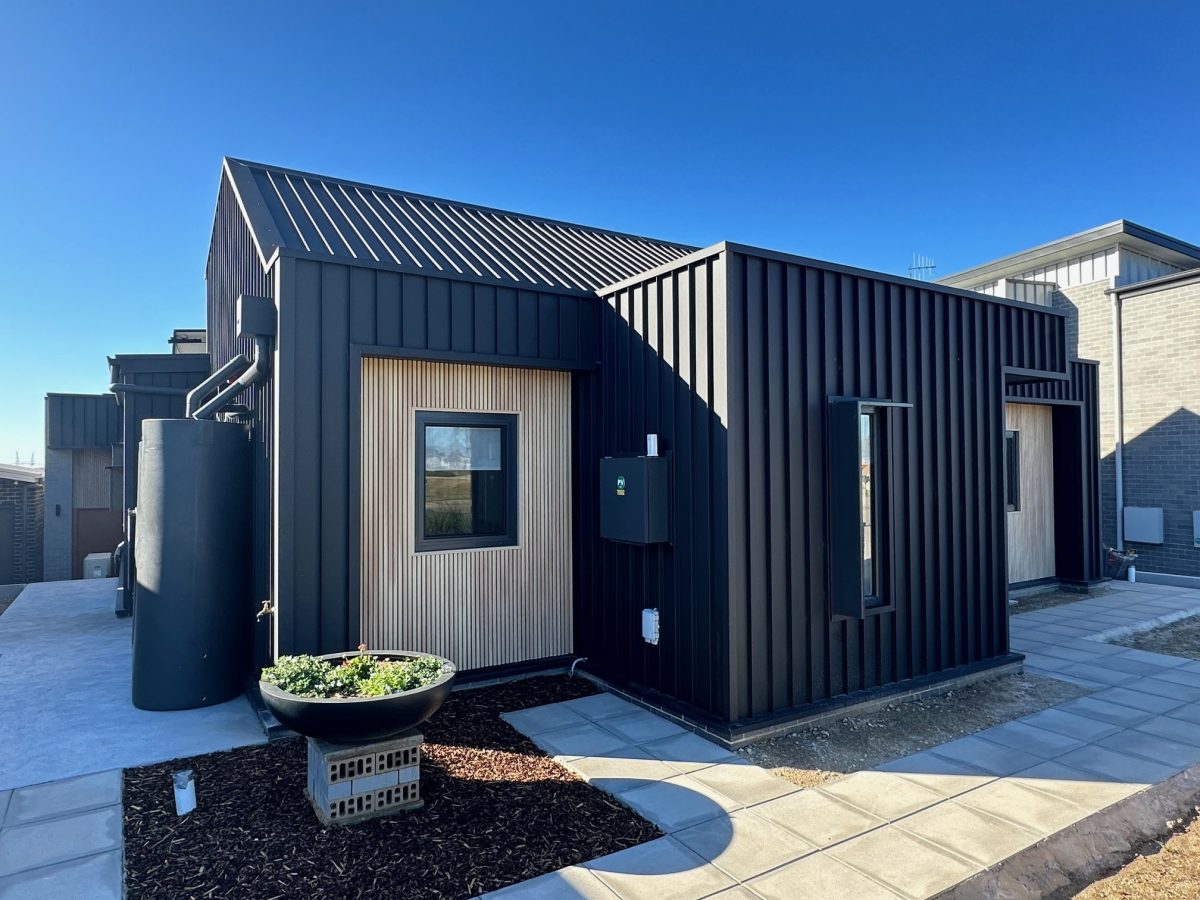
Pavilions on Hilltop is an all-electric, passive solar sustainable home designed for flexible, accessible living. Photo: Ginninderry.
One-fifth of Australia’s carbon emissions comes from individual houses and cars. Lowering these emissions by building sustainably not only helps the environment, it saves money, increases independence, and creates healthier homes more comfortable to live in.
Sustainable House Day has existed in various forms for more than 20 years. Organised by national not-for-profit Renew since 2017, it’s a chance for homeowners to showcase their creations and use them to educate on the importance of sustainability.
More than 100 homes around Australia were showcased this Sustainable House Day, 21 April, to anyone wanting to learn about sustainable home design.
Whether they had solar, recycled materials, water-saving features or something a little more niche in mind, Canberra visitors got to see the heart and soul put into nine local designs good for the planet, yet remain beautiful and functional.
One such home stands in Strathnairn – Johnathan Drury’s Pavilions on Hilltop. Development manager for Ginninderry, Johnathan designed the home specifically to suit his parents’ current lifestyle and remain accessible as they get older.
“Pavilions on Hilltop is a sustainable home with low running costs, designed to allow my parents to comfortably age in place,” he says.
“Something often overlooked in older builds but really important in Canberra is orientation. This house is situated to take advantage of the sun where useful, and shield against it when needed.
“There are also different eave depths depending on orientation – short in the south, deep in the north.”
Pavilions on Hilltop also features three rainwater tanks and two recycled water taps, low-flow showers, a passive solar design and hot water heat pump.
Internal air locks help insulate against heat in summer and retain warmth in winter. High ceilings and ceiling fans are installed in living spaces and bedrooms, supported by wall-mounted hydronic radiators, and all windows are UPVC double-glazed.
Johnathan says designing your own sustainable home can be daunting, but offers an opportunity to get things right from the very beginning.
“Sustainable design comes in many different forms and there are always options to fit different lifestyles or budgets,” he says.
“This home, for example, has been designed to achieve higher sustainability standards using natural principles of orientation, cross-flow ventilation and natural light.
“Be honest with your objectives and realistic with what you can achieve, but don’t be afraid to explore design ideas whilst in the concept phase.”
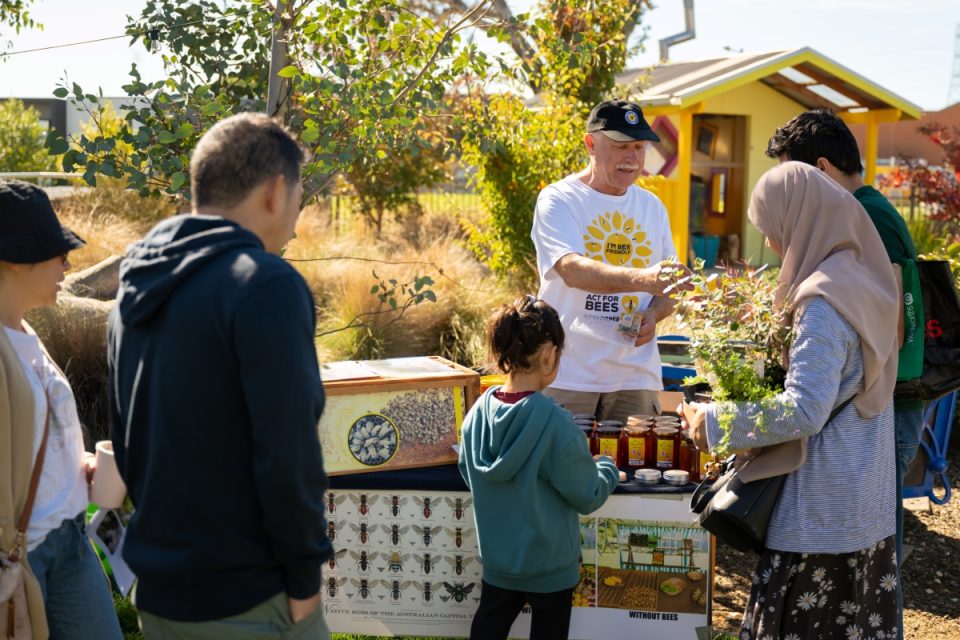
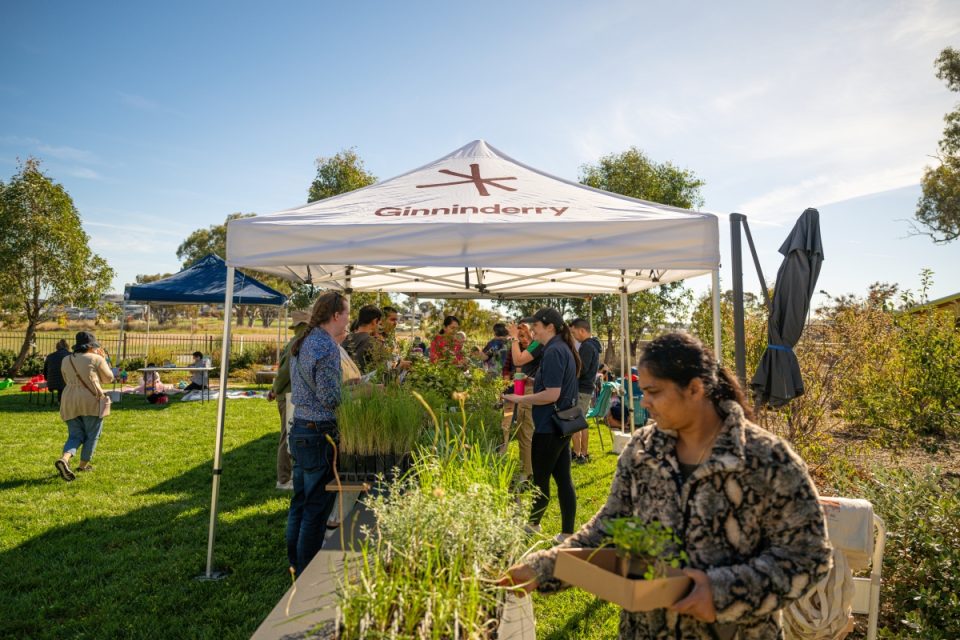
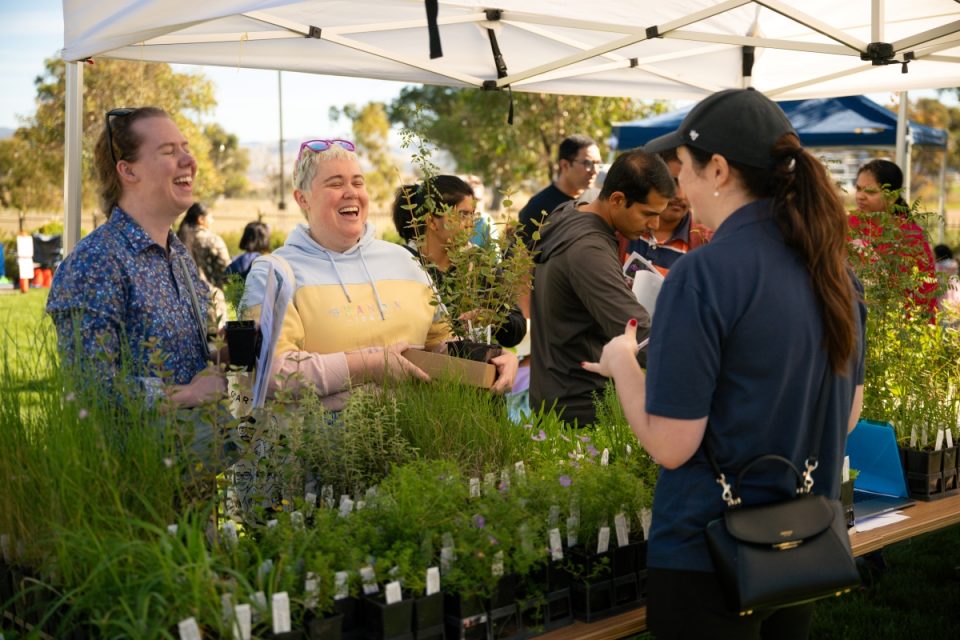

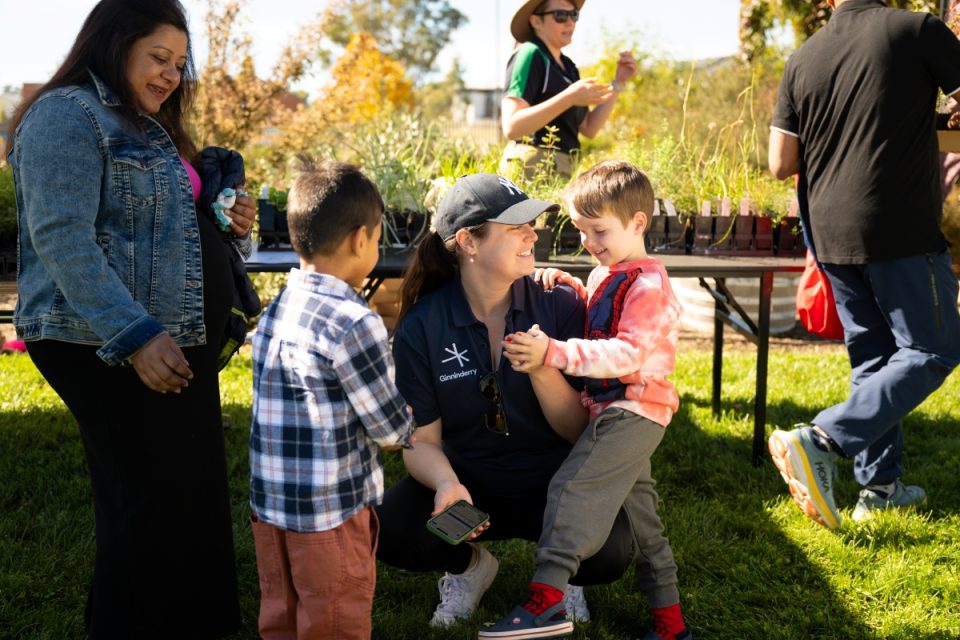

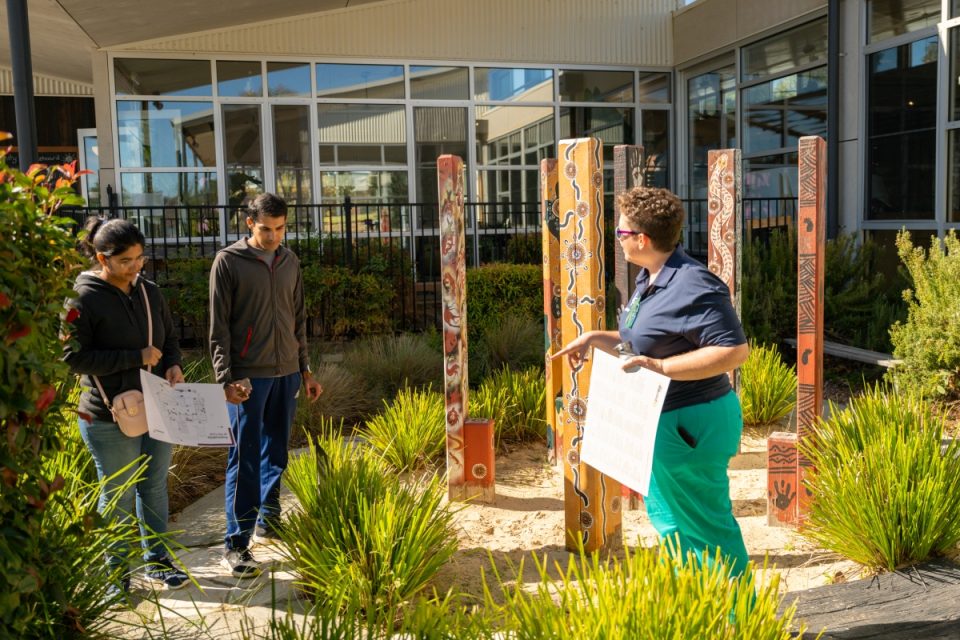
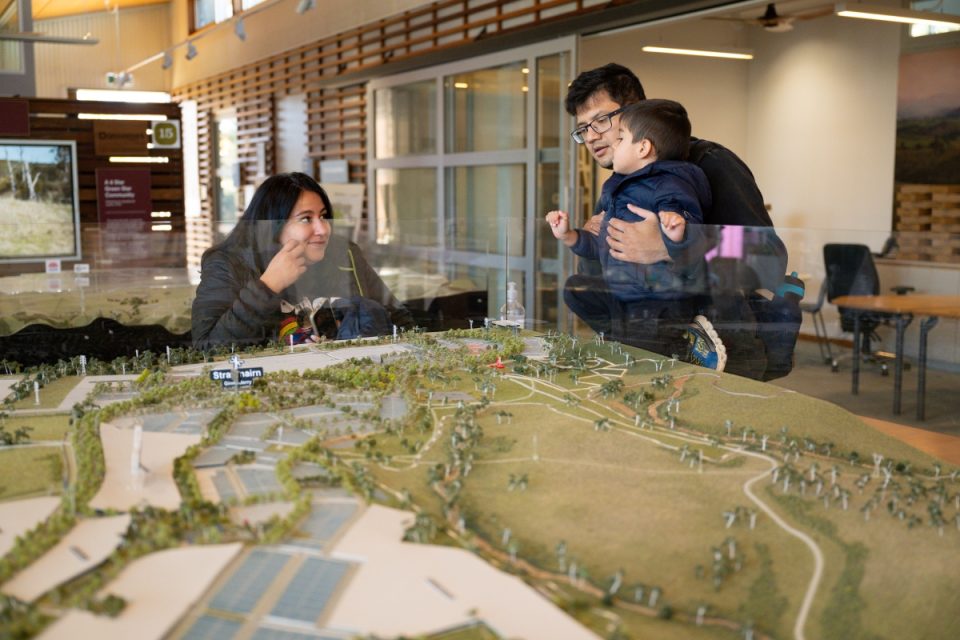
Residents at Ginninderry celebrated Sustainable House Day with a community barbecue and get-together, complete with face painting and jumping castles for the kids, tours of Ginninderry’s community facility, The Link, and free plants for local green thumbs.
“It was lovely to have so many of our residents come along to The Link for a sustainability tour and catch up,” Ginninderry’s sustainability manager, Jessica Stewart says.
“A few of them were glad to learn that they can come down and pick herbs and fruit from the gardens, drop off their bottle lids and coffee pods, and swap books in our community library any time.
“Ginninderry is a showcase of true commitment to social, economic and environmental benefits for everyone.”
Jump online to find out more about sustainability at Ginninderry.













